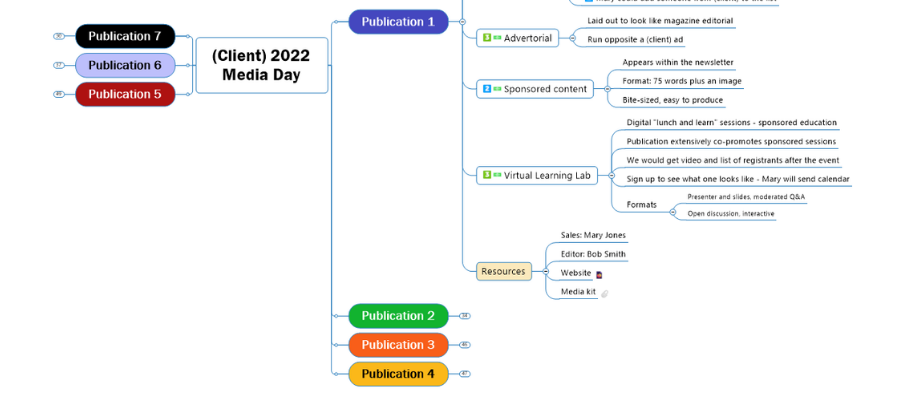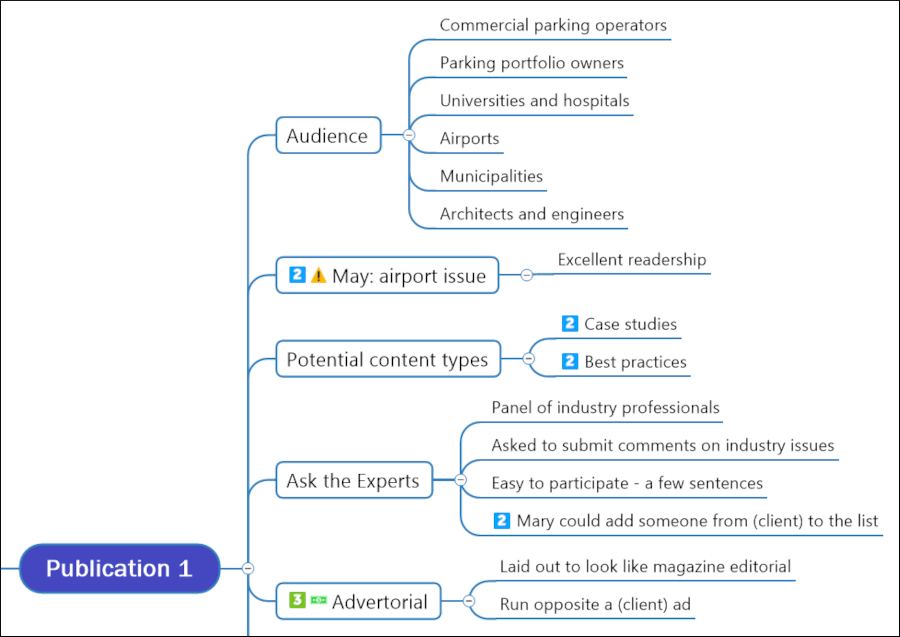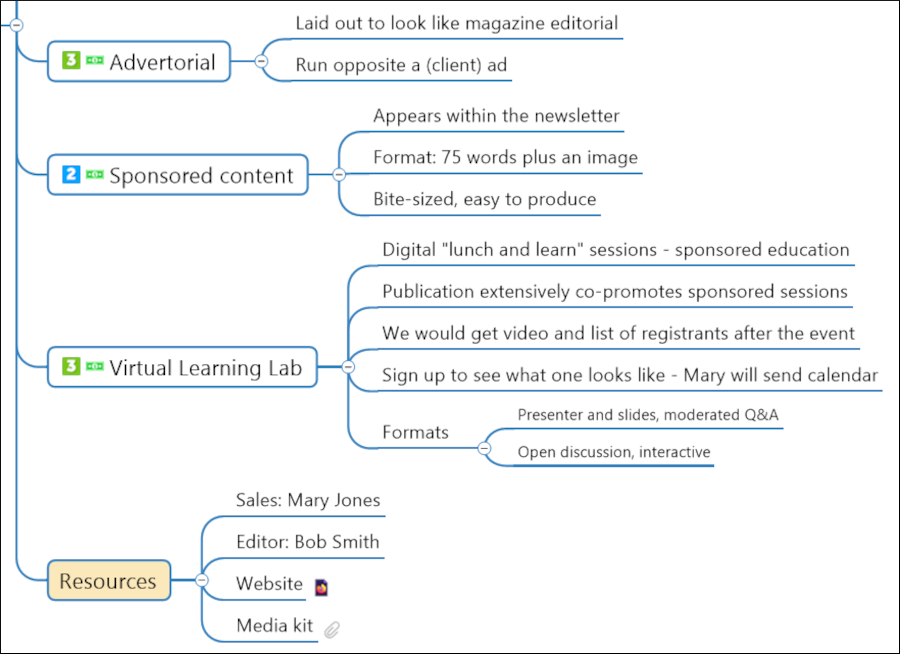
One of the things mind mapping software does really well is enabling us to capture, organize and present large amounts of information in a manageable way. A case in point: events where you need to capture notes and action items from multiple meetings in one day.
Typical scenarios include conferences and trade shows, corporate annual meetings and manufacturer/supplier matchmaking events. I recently encountered this scenario when I conducted a media day for one of the clients at the B2B marketing agency I work for.
During a media day, the manufacturer or its agency arranges a series of Zoom meetings with the editorial and sales staff of each of the publications it wants to target. The purpose of these meetings is two-fold:
- First, the manufacturer provides the magazine’s team with a briefing on what’s new with its products, technology and other developments.
- Second, both parties review the magazine’s editorial calendar (which lists the topics and trends each issue will focus on during the coming year) to discuss any opportunities where the manufacturer to contribute content or expertise, as well as paid opportunities (ads, sponsorships, etc.) that can help it achieve its marketing objectives.
As you may expect, these meetings generate a ginormous volume of notes and opportunities. That’s a lot to present to a client in a meaningful way. That’s why in 2021 and 2022, I used a mind map to summarize and present the results of this type of media day. The client loved it! Let’s take a closer look why, using a genericized version of the mind map I prepared for my client.
Why a mind map is effective in this role
The forest and the trees: When I presented visual summaries of each of the publication meetings, I only opened one branch of the map at a time. This enabled them to see a simple, visual representation of the topics discussed and decisions reached for one meeting at a time. No information overwhelm!
An approachable, actionable format: Consider the alternative to this meeting summary mind map – a long, dense traditional document that no one will ever read, because it takes too long to extract the key learnings, opportunities and next steps from it. The open, skeletal mind map format invites exploration and use.

Visual classification of meeting notes: I used icons and symbols to add meaning and context to these notes. For example, a money icon indicated that an opportunity was paid – in other words, it wasn’t “free” editorial but would be something the client would need to “pay to play.” I also used a caution/attention icon to draw attention to immediate opportunities that we needed to follow-up on right away. This enabled us to see, at a glance, what we collectively needed to pay attention to.
Visual prioritization of opportunities: For each free and paid opportunity for each magazine, I made a rough prioritization, indicated by square, numbered icons (priority 1, 2 or 3). My goal was not to declare that these are the prioritizations these items MUST have. Rather, they served as a jumping-off point for discussion of where we should focus our efforts for best results.
Actionable opportunities PLUS background information: Note that for the screenshots of the mind map in this article, it contains both potentially actionable opportunities and background information. A list of the magazine’s target audience is good background information, for example. Also note how I created a separate topic with a tan background color for “resources” – which included a link to the magazine’s website, an attached editorial calendar and the names and titles of key editorial and sales contacts. This was consistently positioned as the last topic in each magazine’s call summary, so it would be easy to find in the future.

Simple to share: Because I produced this calendar using MindManager, I was able to publish an interactive version of it online, which transformed this media day mind map from something I “owned” and presented into a shared asset that we all could use to manage the client’s media relations throughout the year.
Long-term value
I just opened the 2022 and 2021 media day maps I created for my client and was pleasantly surprised at how useful they still were. The mind map format made it quite easy to find and summarize editorial and paid opportunities for the third and fourth quarter of this year. It was also very helpful to have fast access to each magazine’s website, media kit and editorial and sales contacts.

Leave a Reply